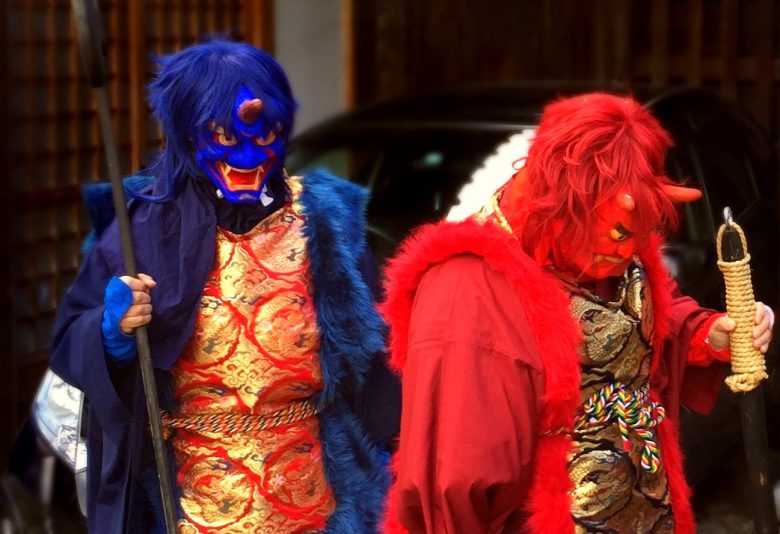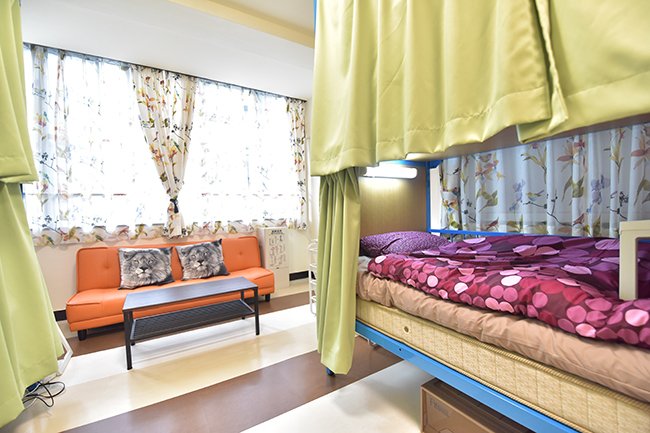
Setsubun: demons out, good luck in
As the month of January reaches its end, a new festival takes place in Japan. One that focuses on a new beginning, with positivity and good luck. For foreign students, workers and interns planning their stay in Tokyo or Kyoto, this is a beautiful event to take part of. For foreign travelers beginning their new life experience in Japan, this festival is a great way to begin it. We refer to the “Setsubun”.

Taking place from the 3rd to the 5th of February, Setsubun marks the last day of winter in the traditional Japanese calendar. As everyone prepares for the arrival of spring and its lively atmosphere, this event focuses on the dispelling of demons and evil spirits. Shrines and temples all around Japan take on events in relation to this. Some of these are the “oni-odori” (demon dance) and the “mamemaki” (bean throwing). Others include the throwing of roasted soy beans for visitors to catch and take home the good luck.

But shrines and temples aren’t the only place to enjoy this beautiful tradition. Households also have their own mamemaki event. At this time of year, it is common to see many shops and supermarkets selling packs of roasted soy beans. Some even include an “oni” (demon) mask as a set. The household tradition is for a family member to play the role of an oni demon, while the rest of the family throws soybeans at it to drive it away. The chant while doing so is “oni wa soto, fuku wa uchi” meaning “out with evil demons, in with good fortune”. The whole scene is particularly enjoyed by children, but adults also enjoy their part in it. After this bean throwing, it is common for each member of the family to eat a number of beans equal to their age plus one. This is done to ensure protection for the coming year.
Another tradition is to place something with bad smell just outside the house decorated with a holly leaf. From old times, a sardine’s head or garlic has been commonly used. The smell appears to be quite unpleasing for demons acting as a good repellent. The sharp points of the holly leaf act as a guardian, preventing the demon to stay around.

Finally, a common food during this time of year is the “ehomaki”. This is a large sushi roll composed of several ingredients. Traditionally the ehomaki is composed of 7 ingredients, in relation to the seven gods of fortune (“shichifukujin”). Nowadays ingredients vary greately, and a visit to the local supermarket shall have a great variety on display. One thing that remains the same is the manners in which to eat this delicious sushi roll. One must face the lucky direction of that year and not make any sound until finish eating. If one happens to speak, it is believed that the luck for that year shall fly away.

Originating from China, the actual meaning of “setsubun” was that of the beginning of the new month in any of the 24 subdivision of the lunar calendar. With time its meaning changed in Japan to that of the last day of “daikan” or the “great cold”. The mamemaki bean throwing initially got incorporated by the imperial court in the ninth century as an exorcism rite of the New Year. Its original name was “tsuina”, meaning “chasing away troubles”. Later in the Muromachi period (1333-1568) the ritual was passed to the common people, where its name changed to “mamemaki”.
From all the traditional events one can experience while living in Japan, this is a major one. There are many more to discover, so if you are already planning your trip to Japan for the upcoming months, or even for next year, feel free to contact our multilingual staff. We are always happy to help you find the most convenient and comfortable home away from home in Tokyo, Kyoto or the beautiful coastal area of Izu.
SAKURA HOUSE
Nishi-Shinjuku K-1 Bldg. 2F
7-2-6 Nishi-Shinjuku, Shinjuku-Ku Tokyo, Japan
Postal code: 160-0023
Google map
- From Japan:
- 03-5330-5250
- From outside Japan:
- +81-3-5330-5250
- Mail:
- [email protected]
- Office hours:
- 8:50 am to 8:00 pm
We are open every day of the year.
- Tokyo time:
- 15:01(We are open now!)







